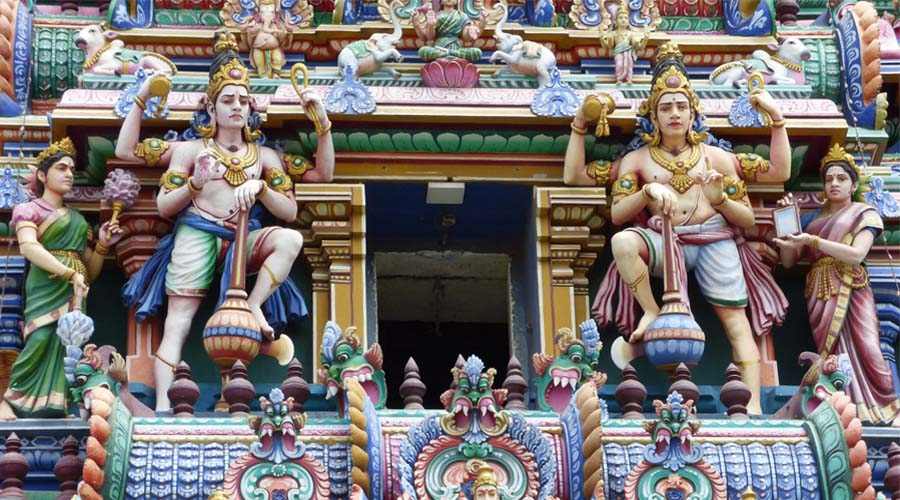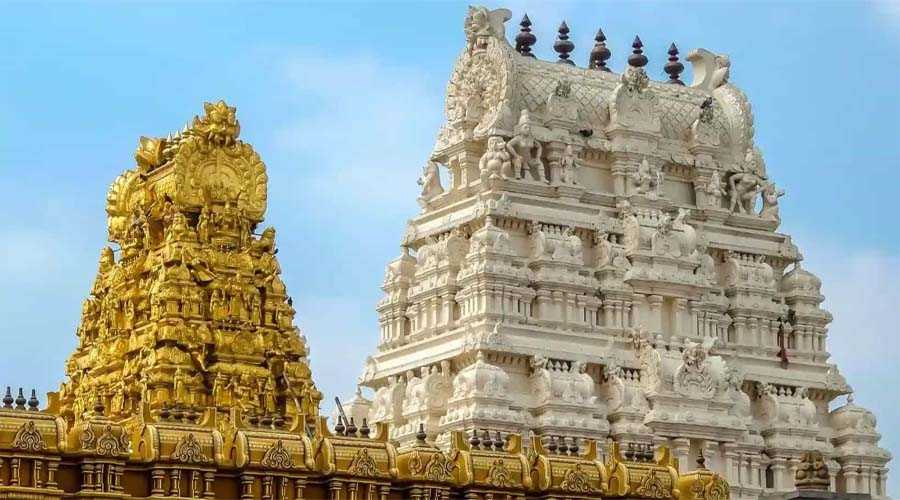Kapaleeshwarar Temple in Mylapore, Chennai, stands as a vibrant emblem of Tamil Shaivism, reflecting centuries of devotion, architectural brilliance, and cultural heritage. This temple, dedicated to Lord Shiva and Goddess Parvati (known here as Karpagambal), holds a unique place in the religious and historical landscape of Chennai.
Historical Significance
The Kapaleeshwarar Temple is believed to have originally been constructed by the Pallava dynasty in the 7th century CE, according to historical inscriptional evidence and the hymns of Saivite saints called the Nayanars. Its original location was along the seashore, near where the Santhome Basilica stands today. However, it was destroyed around the 16th century during Portuguese invasions and subsequently rebuilt by the Vijayanagar kings about one kilometer west of the original site, placing the temple in present-day Mylapore. Its reconstruction marks a resilient continuity of Tamil Shaivism despite colonial disruptions.
The temple’s name itself embodies an important Shaivite legend: it is said that Lord Shiva plucked one of Brahma’s five heads (kapala) in a divine act of retribution for Brahma’s arrogance. To expiate his sin, Brahma installed a Shiva lingam at this site. Goddess Parvati worshipped Shiva here in the form of a peacock (Mayil), giving Mylapore its name, which means “Town of Peacocks” in Tamil.
Architectural Marvel
Kapaleeshwarar Temple showcases quintessential Dravidian-style architecture infused with Vijayanagar and Nayak influences. Its most striking feature is its majestic eastern Rajagopuram, a towering gateway about 37 meters high, completed in 1906. This gopuram is adorned with colorful stucco figures depicting Puranic legends and deities, creating a visual spectacle that narrates spiritual lore through intricate sculpture.
The temple complex includes several shrines, with the main sanctum dedicated to Lord Shiva as Kapaleeshwarar and a complementary shrine to Goddess Karpagambal. The use of stone masonry, brick superstructure, and decorative stucco work exemplify the craftsmanship of the period. Additionally, the temple houses halls used for divine discourses and cultural programs, further enhancing its role as a center for spiritual and cultural gatherings.
Cultural and Religious Importance
Kapaleeshwarar Temple is deeply interwoven with Tamil Saivite traditions and the legacy of the 63 Nayanmars, holy saints who were ardent devotees of Lord Shiva. The temple honors their memory by housing bronze idols of all these saints and celebrates their devotion through the annual Arupathumoovar festival held between mid-March and mid-April. This festival is a grand 10-day event marked by processions where the idols of Lord Shiva, Goddess Parvati, and the 63 Nayanmars are paraded through the streets of Mylapore, attracting thousands of devotees and tourists alike.
The temple also holds a special place in Tamil devotional literature. Saint Sambandar, one of the foremost Nayanars, composed hymns praising Lord Shiva here. A shrine dedicated to Sambandar and his beloved disciple Poompavai is present in the temple, commemorating their association with the temple and miracles attributed to their devotion.
Spiritual Experiences and Visitor Insights
Visitors often find the Kapaleeshwarar Temple to be a sanctuary of spiritual solace. It is believed that the temple’s goddess, Karpagambal, grants blessings that alleviate life’s difficulties. The temple’s ambiance, enriched by the sacred tank on the western side and various mandapams (halls), invites devotees to engage in worship, prayers, and cultural rituals.
The festive atmosphere during the Arupathumoovar festival is particularly vibrant, showcasing not just religious fervor but also the rich cultural heritage of Tamil Nadu through music, dance, and community participation. Despite the crowds, the celebration retains an intimate spiritual connection for devotees, reinforcing the temple’s role as the heart of Tamil Shaivism in Chennai.
Conclusion
Kapaleeshwarar Temple in Mylapore is more than just a religious site; it is a living testament to the enduring legacy of Tamil Shaivism. With its historical roots in the Pallava era, architectural grandeur influenced by various South Indian dynasties, and rich cultural traditions exemplified by the reverence of the Nayanmars, the temple encapsulates the spiritual and cultural soul of Chennai. For devotees, pilgrims, historians, and tourists alike, Kapaleeshwarar Temple remains a must-visit destination that offers a profound glimpse into the religious fervor and artistic prowess of Tamil Nadu’s heritage.


